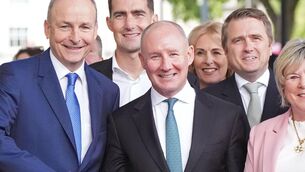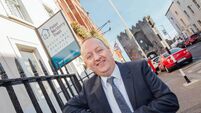Keeping council
IT WAS a decision that came out of the blue, a decision to hold what has come to be regarded as one of the most significant events of the second half of the 20th century — an event the full ramifications of which remain uncertain today.
On Oct 11, 1962 — 50 years ago tomorrow — 2,500 bishops from all parts of the world filed into St Peter’s Basilica in Rome for the opening session of the Second Vatican Council.
Senior figures in the Roman Curia were staggered when, less than three months after his election, Pope John XXIII told them on 25 Jan, 1959, that he was calling a general Council. His announcement was all the more surprising because, at the age of 77, he was widely seen after his election in succession to Pius XII as a “caretaker Pope”.
Opposition to a Council surfaced immediately. The Vatican old guard was hostile from the outset. “The thought of assembling the world’s bishops and letting them talk to each other, and maybe even have new ideas, was horrifying,” according to eminent church historian, Eamon Duffy. “The Council he had called, with no very clear notion of what it might do, proved to be the most revolutionary Christian event since the Reformation,” said Duffy.
During the four plenary sessions, held between Oct 11, 1962, and Dec 8, 1965, every aspect the Church’s life, structure, and mission was scrutinised, and in many cases transformed. What was happening was the most radical overhaul of the Church since the Middle Ages.
Pope John XXIII, anxious to update Catholicism and to engage it fully with the modern world, had invited the bishops to undertake nothing less than a reimagining of the Church.
What finally emerged were 16 documents which, between them, represented a blueprint for a Church radically different in some respects to the concept of the Church that emerged from Vatican I in 1870, and which was built around the declaration of papal infallibility and a pyramid structure of authority with the role of the laity reduced to that of praying, paying and obeying.
Three of the big themes to emerge were the redefinition of the Church as the “people of God” (which envisioned greater involvement of the laity); a new emphasis on ecumenism (incorporating a new recognition of the legitimacy of the other Christian Churches, and abandoning the notion of “one true Church”); and the concept of collegiality.
Fifty years on, this latter concept remains one of the most contentious, disputed, and divisive reforms of Vatican II (and is, incidentally, the subject of a new book from former president, Mary McAleese). It was taken to mean that the bishops would share responsibility with the Pope for the governance of the Church.
However, after the death in mysterious circumstances of Pope John Paul I (after just 33 days in office), it soon became clear that his successor, John Paul II, had scant regard for collegiality. Throughout his long pontificate, he effectively sidelined not just collegiality but many of the other reforms of the Council. His modus operandi was summed up by one American bishop who, leaving a meeting in the papal apartments, said of John Paul II: “He treats us like messenger boys.”
The truth is Karol Wojtyla was a medieval Pope, firmly wedded to the notion of an imperial papacy, and it is part of his legacy that he stalled and fudged all along the way on the reforms of Vatican II. In this, he was ably aided and abetted by the man who was to succeed him as Benedict XVI.
Vatican II had only minimal impact in Ireland. This was largely due to the indifference of the bishops, an indifference which at the time inevitably infected the media. The only visible change was in the liturgy — Latin was abandoned, and the Mass was now said in English (and Irish), with the priest facing the people.
HAVING ignored the first three sessions, the media finally woke up to the significance of what was happening in Rome before the fourth and final plenary session in late 1965. The Irish Times, the Irish Independent and RTÉ sent correspondents to Rome to cover it. The reports from the Irish correspondents, and the continuing commitment in the aftermath of the Council of a small group of lay people, priests, theologians, and journalists — along with the editors of such magazines as The Furrow, Doctrine & Life and Reality — helped to keep the spirit and vision of Vatican II alive in Ireland.
Over the years, support for the reforms of Vatican II has grown, and the emergence of the Association of Catholic Priests has given further impetus to this. All of this has gone on despite an increasingly authoritarian regime in the Vatican that is committed to crushing any form of clerical dissent. The silencing of a number of Irish priests earlier this year is evidence of this. The commitment to reform is seen as encouraging by Professor Hans Kung, one of the world’s best-known Catholic theologians and a onetime academic colleague of Joseph Ratzinger — now Pope Benedict XVI.
“The only way for reform is from the bottom up,” Kung told the BBC this week. “The priests and others in positions of responsibility need to stop being so subservient, to organise themselves and say that there are certain things that they simply will not put up with anymore.”
Although Kung, who is now 84, was stripped of his authority to teach Catholic theology by Pope John Paul II in 1979 for questioning the doctrine of papal infallibility, he remains an outspoken critic of Benedict XVI, describing the latter’s time in office as a “pontificate of missed opportunities”. He has expressed the hope, though, that the Pope may yet do “something courageous”.
Sadly, there’s little on which to base this hope. Asked if it would require another Council — Vatican III — to break the impasse between a Church modelled on Vatican I and a Church modelled on Vatican II, Prof Kung said “another Council would be nice, but highly unlikely in present circumstances”. Meanwhile, the Catholic Church remains deeply divided, and in Europe in particular it is declining at an alarming rate. The near-empty churches and the chronic shortage of priests is just one manifestation of this.
* TP O’Mahony is the author of Why the Catholic Church Needs Vatican III, published by The Columba Press . For more on Vatican II, see Features in tomorrow’s Irish Examiner.
















